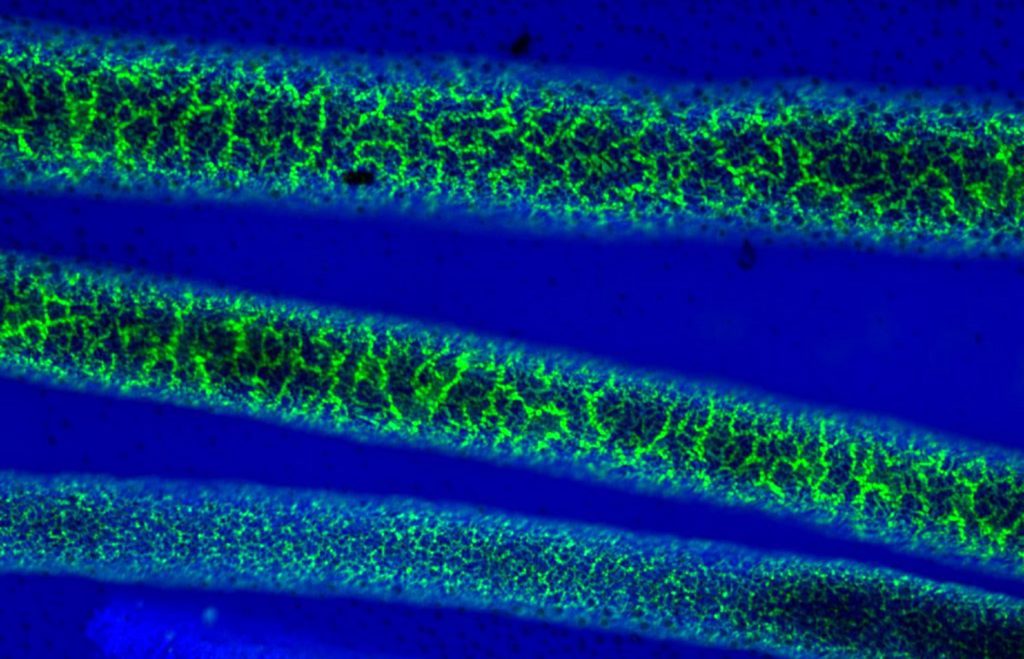
COVID-19 vaccines are just the beginning for mRNA-based therapies; enabling a patient’s body to make almost any given protein could revolutionize care for other viruses, like HIV, as well as various cancers and genetic disorders. However, because mRNA molecules are very fragile, they require extremely low temperatures for storage and transportation. The logistical challenges and expense of maintaining these temperatures must be overcome before mRNA therapies can become truly widespread.
With these challenges in mind, Penn Engineering researchers are developing a new manufacturing technique that would be able to produce mRNA sequences on demand and on-site, isolating them in a way that removes the need for cryogenic temperatures. With more labs able to make and store mRNA-based therapeutics on their own, the “cold chain” between manufacturer and patient can be made shorter, faster and less expensive.
The National Science Foundation (NSF) is supporting this project, known as Distributed Ribonucleic Acid Manufacturing, or DReAM, through a four-year, $2 million grant from its Emerging Frontiers in Research and Innovation (EFRI) program.

The project will be led by Daeyeon Lee, Evan C Thompson Term Chair for Excellence in Teaching and Professor in the Department of Chemical and Biomolecular Engineering (CBE), along with Kathleen Stebe, Richer and Elizabeth Goodwin Professor in CBE and in the Department of Mechanical Engineering and Applied Mechanics. They will collaborate with Michael Mitchell, Skirkanich Assistant Professor of Innovation in the Department of Bioengineering, Drexel University’s Masoud Soroush and Michael Grady, the University of Oklahoma’s Dimitrios Papavassiliou and the University of Colorado Boulder’s Joel Kaar.
The concept at the heart of the DReAM technique is a continuous enzymatic reaction and separation process, enabled by a complex form of liquid media known as a “bijel.”
Bijels, or bicontinuous interfacially jammed emulsion gels, are structured emulsions of oil and water that are kept separated by a layer of nanoparticles. Critically, these nanoparticles keep the oil and water from forming isolated droplets, like those that occur when you shake a bottle of salad dressing. This highly intertwined but unbroken arrangement allows for continuous chemical reactions and isolation of products, as reactant molecules can be fed into one of the phases while the reaction’s products are extracted from the other.
Lee, Stebe and Martin Haase, then postdoc in their labs, developed a method for making bijels in 2015 and have been refining it ever since. More recent work from their team showed that these bijels can be produced without any surfactants, or soap molecules, making them ideal for running enzymatic reactions. As their technology matured and the challenges of distributing mRNA-based COVID vaccines began to appear, the researchers realized that bijels could represent a solution.
The DReAM technology enables continuous synthesis and isolation of mRNA, overcoming the challenges posed by the conventional technique that relies on multi-step complex separation processes that are performed one batch at a time. Moreover, by enabling mRNA’s isolation into the oil phase of the bijel, the sequences would be stabilized and protected from the degradation that readily occurs in water. In addition to circumventing transportation logistics, this extra protection would significantly reduce the need for cryogenic storage, further widening the locations where mRNA-based therapeutics could be manufactured.
This method could also enable on-site production of other pharmaceutical products in a wide range of settings, giving it the potential to support space exploration, national defense and disaster recovery efforts.
The team plans to use the EFRI funds to support outreach initiatives for K-12 and underrepresented students to foster diverse interest in STEM careers. The researchers will organize two workshops to explore and discuss the potential economic and employment opportunities, as well as health benefits, that the deployment of the DReAM technology could bring to communities, particularly those disproportionately impacted by health care inequity and disparities.
